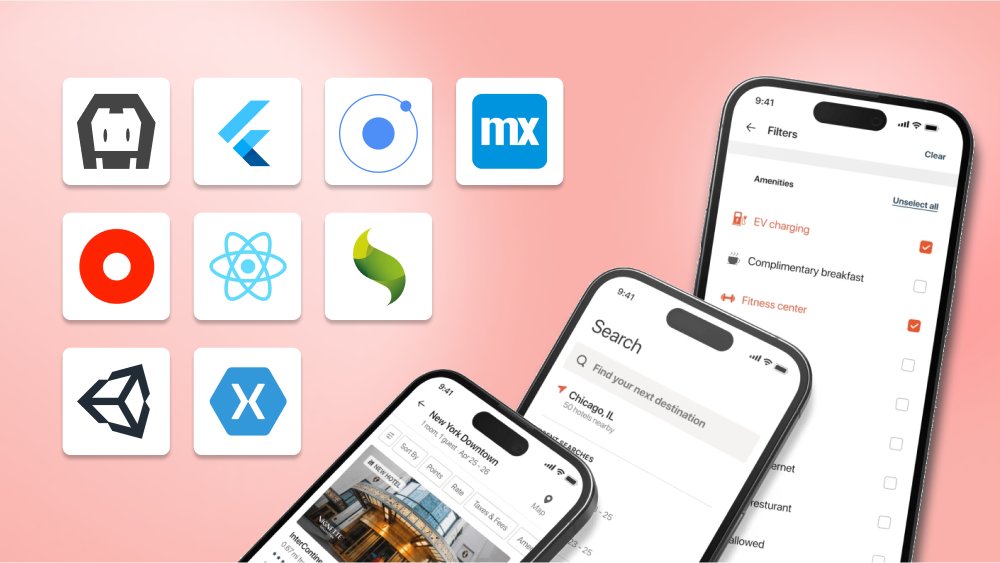SPA Vs. MPA Explained: Differences Between Single-Page Applications and Multi-Page Applications

Content Map
More chaptersThe two main architecture options for building web applications are Single-Page Applications (SPAs) and Multi-Page Applications (MPAs). MPAs look and function like traditional websites, where you navigate through multiple separate pages, and each page is devoted to a specific product, service, or piece of content. SPAs work a bit differently, as they render everything on one page and do not require page reloading to use.
Choosing the right architecture option is vital to creating a web application that meets your unique requirements. Read on to find out what SPAs and MPAs are, how they work, their pros and cons, and how to choose the right one for your project.
What Is a Single-Page Application (SPA)?

SPA is a web app that or a website runs in your web browser and loads everything from one page. This means that you interact with everything in the app using one screen, as opposed to jumping from one page to the next like a traditional website or MPA. When you open an SPA, the app uses dynamic rewriting in JavaScript to gradually update what you see on the screen based on certain actions that you perform.
Social media platforms like Facebook and X (formerly Twitter) are good examples of SPAs; as you scroll down your Facebook or X feed, the app will continuously update and show you more content without ever reloading the page or redirecting you to a new page. This same logic applies when you go to other pages in the app. Instead of performing a full app reload, a SPA will only reload the main content section of the app, preserving the same header, menu, and footer as every other page.
What Is a Multi-Page Application (MPA)?

An MPA is a type of web application that loads a new page every time you perform a specific action. These apps are considered traditional web applications, as they have been around for longer and function like traditional websites.
When you perform a specific action in an MPA (e.g., click on a button or hyperlink), the app will redirect you to a new page and load that page from scratch. This is in stark contrast to SPAs, which only reload the parts of the app that you interact with while preserving all the other untouched page elements. For this reason, MPAs consist of multiple, separate static HTML web pages, as opposed to a single page that dynamically updates every time you perform a specific action.
Businesses that sell multiple products and services typically use an MPA architecture, as it enables them to personalize the look and feel of each static page to match the intentions of the business.
What Are the Pros and Cons of SPAs?
There are many good reasons to use SPAs. They offer fast loading times, a seamless user experience, and a boost to the entire development process. That said, there are drawbacks to SPAs, too. They are unable to harness the full potential of search engine optimization (SEO), and they are prone to unique security risks. Here is a more detailed breakdown of SPAs — the good and bad.
Pros
Fast Loading Times and Performance
When you first open an SPA (for example, Google Maps), the app will download all necessary content upfront. Then, as you navigate through the app, it will continue to fetch new data and update the on-screen content without reloading the entire page. The result is a faster loading time than an MPA, as there is less back and forth between the SPA and the server.
Data Caching
Data caching is the process of storing local web and app data on a device and then reusing that data for faster access. When you use an SPA, the initial page load will store a large amount of data in a cache. Not only does this improve loading times, but it also lets you work with offline functionality. Data caching is an important component of custom web application development to improve performance.
Faster and Easier Software Development Life Cycle (SDLC)
Depending on the project, developing an SPA may be faster and cheaper than developing an MPA. Why? Because you can use the same application programming interface (API) for both web and mobile application development.
At Orient Software, we have also noticed that clients often use the SPA architecture to request a minimum viable product (MVP). It is one of the most economical ways to assess the potential of an app idea — before you commit to the final product.
Cons
Poor SEO Support
An SPA is not able to take advantage of SEO as well as an MPA. This is because search engine crawlers, in their current form, are not as good at gathering information from a single dynamic web page as they are at gathering information from multiple static web pages. This makes it harder for search engines to recommend websites and web apps that use the SPA architecture. As a result, SPAs have an uphill battle in achieving search visibility.
Requires JavaScript to Function
Without JavaScript support, an SPA cannot take advantage of dynamic reloading. For this reason, your software development team must be proficient in JavaScript so that they can deliver a fully functional SPA. Also, if a user disables JavaScript in their web browser, then they won’t be able to use your SPA properly.
Security Concerns
The SPA architecture is prone to unique security risks. One of the biggest security concerns is cross-site scripting (XSS), where a threat actor injects malicious JavaScript code into the SPA and then uses that code to access the SPA on the client side.
What Are the Pros and Cons of MPAs?
Despite their age, MPAs have a lot of advantages. They offer excellent SEO, scalability, and data analytics support. However, they do exhibit performance issues due to having multiple pages.
Pros
Excellent Scalability
There is no limit on the number of pages that you can add to an MPA. This is why online stores and news outlets use the MPA architecture, as they can devote individual pages to individual products, services, topics, and stories. This same logic applies to page length as well — you can make the length of each page as long as you need it to be.
Improved SEO Performance
For search crawlers, they have a much easier time gathering information about an MPA than an SPA. This makes it easier for search engines to learn what the MPA is, who the target audience is, what their search intent is, and what the most popular web pages are. As a result, MPAs are a great choice for search visibility.
Data Analytics Support
The benefits of data analytics cannot be understated. Web app owners often rely on web analytics tools to learn more about their users, such as customer behavior (e.g., interests, favorite products, wish listed items, purchase history) and visitor metrics (e.g., page views, number of unique visitors, bounce rate). They can then use this data to improve the browsing experience.
Due to the multi-page structure of MPAs, website owners can use web analytics tools to assess the performance of each web page and then optimize the lower-performing pages to achieve better outcomes.
Cons
Slower Performance
Each time you interact with an MPA, the app will either reload the page or redirect you to a new HTML page. This process, compared to the dynamic reloading feature in SPAs, is much slower, as the app must process user requests for multiple HTML pages from the server.
More Time and Money to Develop
Typically, an MPA will have more features, more pages, and more content than an SPA. This makes MPAs more difficult and expensive to develop, as well as more costly to maintain over the long term. As a result, it may take longer to release an MPA than it would to release an SPA of a similar nature. Software testing for an MPA also takes longer than it does for an SPA.
Less Supportive of Reusable Code
Unlike a SPA, where you can use the same API (as well as third-party APIs) for both the web and mobile versions of the app, this is, sadly, not the case for MPAs. Therefore, if you wish to launch a web and mobile MPA, then the development team will devote extra time and resources to building the backend for both versions from scratch.
How To Choose Between SPAs and MPAs
By now, you should know what the pros and cons are for SPAs and MPAs. However, you still need to choose the right architecture for your web or mobile app. Which is right for you? Ultimately, that will depend on your project requirements. But to help you out, here are a few pointers to consider.
Use the SPA Architecture If…
- Search visibility is not a priority for you
- Your app has a lot of interactivity and features
- Your development team is experienced in JavaScript and SPA security
- You have a limited budget and a short turnaround to deliver an app
Use MPA Architecture If…
- Search visibility is a priority for you
- Your app is mostly read-only, with limited interactive components
- Your app offers a wide range of products, services, or pieces of content that require separate pages.
- You want your app to function without JavaScript.
Developing MPAs and SPAs with Orient Software
Orient Software has over 18 years of experience developing single- and multi-page web and mobile apps.
We develop apps that are not only fast and visually stunning but also designed to fulfill your intended business functions. By prioritizing the user experience and your business needs, we deliver apps that both you and your users will love — and that will help your business gain a competitive advantage.
And if you require post-launch support for your MPA or SPA, our team can provide continuous monitoring and maintenance support along with routine software updates, patches, and quality-of-life improvements.
For more information about our web and mobile app development services, contact us today.







